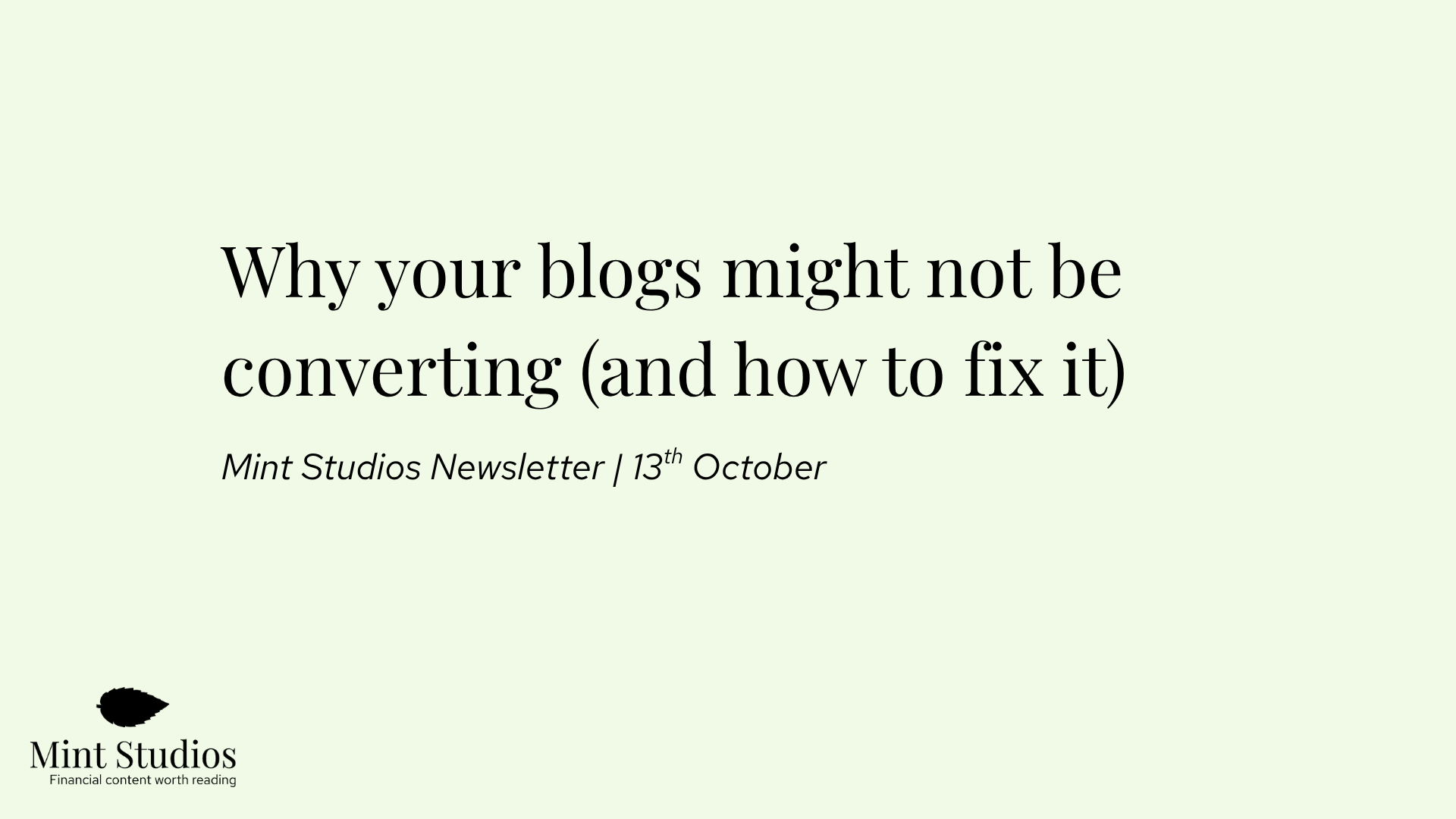A lot of content marketers believe you should never write about your product in your content.
They believe it’ll come across as too salesy and would repel the reader – that the real purpose of content is just to educate. And if you do a good job, they might come back and convert.
But as we’ll see in this article:
- If you really want to educate well, you’ll sometimes need to include your product to properly explain a concept.
- Not talking about your product is sometimes a worse experience, especially when the reader is specifically looking for product information.
- Talking about your product can help establish you as an expert, bring credibility to your company and differentiate you from competitors.
- Not talking about your product can mean you might be leaving customers on the table.
Sure, there is such a thing as being “too salesy” and being too product oriented. But that’s not what we’re talking about. In our experience, marketers don’t want to talk about the product even when the reader clearly is looking for product information.
We’ve written hundreds of Bottom of the Funnel articles (articles targeting people looking to buy), and one of the first things we do when we start working with a client is optimise some of the content on their website. Almost always, that involves writing more, not less about the product.
In the article below, we’re going to explain why marketers should be writing more about the product, followed by a guide on how to do this in a way that increases conversions – and doesn’t repel readers.
Table of contents:
Two reasons you should write about your product
Not wanting to be salesy is an understandable reason for not writing about the product. But ultimately the devil is in the details: there are ways to write about your product without being too salesy.
And when someone is searching for product information (e.g. “direct debit api” or “corporate expense cards”), then you should be writing about your product. If not, you are not matching the searcher’s intent and are not giving them the information you need.
- It’ll increase conversions
It may seem counterintuitive, but we’ve had many cases where including more information about our client’s product has increased conversions.
And it makes sense: if you give someone the information they’re looking for and it is what they’re looking for, then they’ll reach out. Let’s take a real example:
William Russell is an international health insurance company that specialises in health insurance for expats.
Their “health insurance Nigeria” article was ranking on the #1 position for health insurance Nigeria. But in the past year or so (May 2022 to March 2023), that article had only got 8 conversions – even though the global search volume for that keyphrase is 850 searches per month.

When you’ve got an article that’s in position #1, has high search volume but has low conversions, that’s low hanging fruit and one of the first things we look to improve. So one of our first tasks was to optimise and improve that piece of content. Before working on it, the structure of the article was:

The article was a well written and well researched article on healthcare in Nigeria.
But someone searching this up is typing into Google the keyphrase “health insurance Nigeria”. They are clearly looking for health insurance and ready to get started. But in the original article, when it came to answering the searcher’s question, there was no clear explanation of how to get health insurance, and how the William Russell product worked:

Even when the article does talk about how health insurance works in Nigeria at the beginning, it only covers healthcare and insurance at a surface level.

The article don’t even mention their own brand. Instead, it’s simply “private international health insurance”. The only mention of the product is in the CTAs.
When we started working with them, here’s what we did:
- Rearrange the structure to:

- Whereas before William Russell doesn’t talk about how to get health insurance until section 3, we started out the article by directly answering the question.
- Three of the sections are now devoted to William Russell. We explain how to get started with William Russell insurance, why it’s worth picking them and what type of people they’re best for.
- We still include educational tips, but leave them at the bottom.
- We go in-depth about the William Russell product, focusing on the features and benefits we believe someone looking for health insurance in Nigeria would care about.
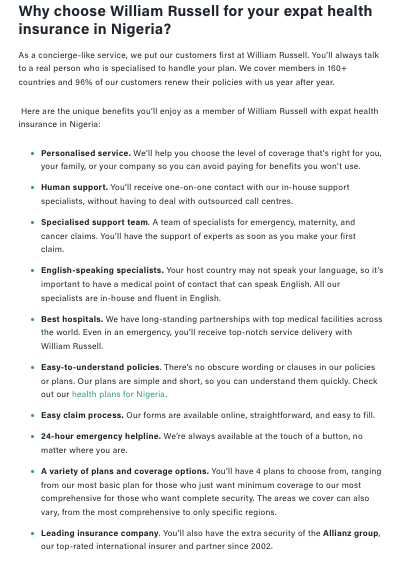
Again, that’s because someone typing up “health insurance Nigeria” is literally looking for health insurance. They want to know how to buy health insurance, what to keep into account, and are potentially comparing different providers. They are looking for product information.
Before, the William Russell article started out focusing on educational aspects of health insurance in Nigeria, like “private healthcare in Nigeria – is it better?” and “What percentage of Nigerians have health insurance?”. Although it was great content, it didn’t make sense to start out like this: someone typing this up is not looking up information about healthcare and statistics, they are looking for health insurance information in order to sign up.
Which is why when we adjusted and changed it to focus more on the product, we got 5 conversions immediately in the month after updating the article (March).

In April, the number of quotes doubled to 10. That’s more than all the conversions this article got in the last year combined. And to date, this article is one of the highest converting pieces on the William Russell website. All because we decided to give the searcher what they wanted: product information.

As you can see, not writing about your product could lead to you literally leaving customers on the table.
It’ll prove that you know what you’re talking about and will distinguish you from competitors
This is especially true in more complex industries or where a topic is more nuanced and subjective.
When someone is reading an article on something like “corporate innovation”, the first question they ask themselves is: why should I listen/read to you?
Talking about your product in detail helps establish credibility, and demonstrates that you know what you’re talking about.
Compare these two articles:
- Benefits of Multiple Payment Options for Businesses | GoCardless
- Multi-options payments: How to add them seamlessly with Zai
In the article written by GoCardless, we get a good overview of why it’s worth offering different payment methods – and that’s pretty much it.
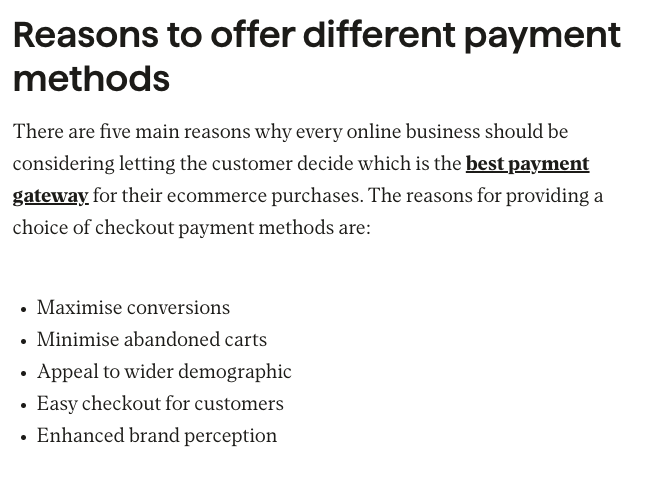
The people who were hoping to learn about how to implement different payment options into their product won’t get answers in that article. Although they do have a demo on loop which looks very good, it only showcases how to collect direct debits with GoCardless (in other words, only one payment option).
Contrast this with the article we wrote for Zai on multi-option payments. In this article, we decided that the best way to explain something complex like how to accept multiple payment methods, is by explaining it via the product.
First of all, we actually list out the payment methods the customer can implement:

And then when we go into detail about Zai’s key features and benefits, we explain how the customer can access multiple payment options via Zai’s RESTful APIs. And even better, we add a diagram, because we know how abstract this can be:
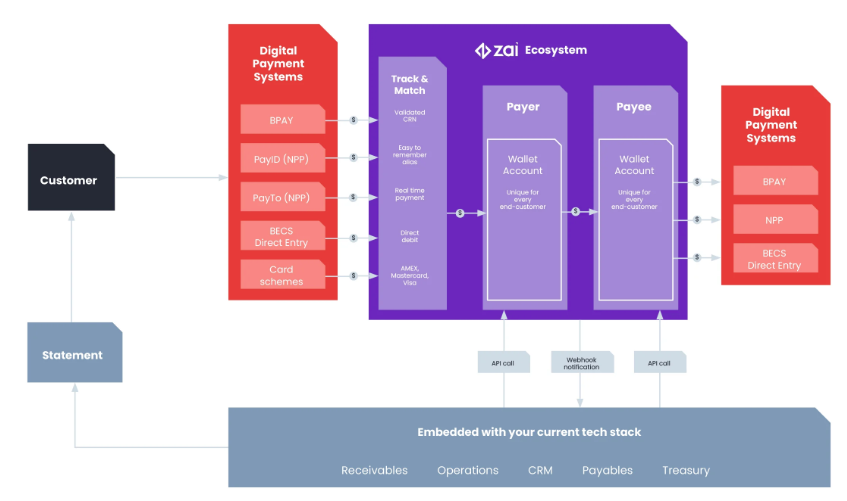
We even go further in this article by explaining the key mistakes they should avoid:

And finish off the article with a real life case study of how a Zai customer used the API to implement multiple payment options (case studies are a great way to explain how things work in practice, which is why we do them a lot – as you’ll see in one of the tips below).
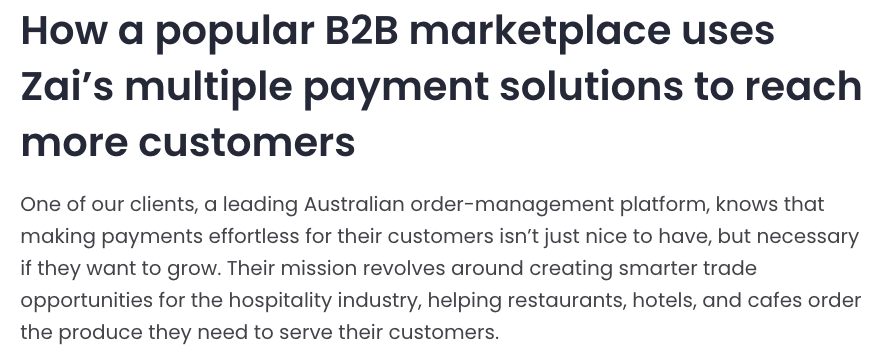
Based on these two articles, one by GoCardless and one by Zai, which one do you think will leave the reader thinking “I understand multi-payment options better.”
Probably Zai. Which means when they have questions at the time of implementation, who are they most likely to reach out to? Zai.
Not just that, but now the reader understands the Zai product a lot better than GoCardless’ product. Talking about the Zai product has also helped distinguish them from competitors.
This is especially helpful in more saturated markets like Open Banking, identity verification or neobanks. And yet, a lot of these companies never mention their product in their content. How is the reader supposed to know whether they should pick your company over someone else?
How to write about your product
The thing about product copywriting is that it’s hard. It’s super hard. In fact, it’s the hardest part of our job.
We work in the fintech space, and tend to work with clients who have complex products or services, which makes it even harder. Product copywriting is hard because:
- We have to spend the time understanding the product. That usually involves doing a demo, talking to salespeople, going back and forth with the product person, and involving the compliance person.
- We have to understand the nuances of the product and be able to clearly explain the features and the benefits. Understanding is one thing, but then explaining it in a way that the ideal customer will understand is another.
- We have to be willing to go the extra mile. Include a diagram if necessary, interview an extra product person. Since we’re accountable for leads and sales (and not just traffic), we need to make sure this article does what it’s intended to do.
- We have to be in constant contact with product managers and marketers. With many fintech companies there are new features being launched and updates to the messaging. Things change, and we have to be in the know so we can update articles accordingly.
However, there is one positive:
- Usually, the features and benefits stay the same. Once you nail your key features and benefits and understand customer pain points, BOFU content involves repeating these in different ways. In other words, once we understand the product, it’s just a matter of repeating it in the right way for the reader. That’s it.
There are ways to write about the product without coming across as salesy.
But in our experience, to do this well, you need to fully understand the customer pain points and the product. When you do, you realise that writing about the product means that you’re actually helping the reader, not selling to them.
Once you realise that you're helping, and not selling, the writing comes a lot more naturally.
Over the years of writing about product for fintech clients, these are our tips for in-house copywriters, product marketers and freelancers and agencies on how to write about your product:
1. Spend time understanding the product and allocate one product expert to review your content
Whether you’re in-house, a freelancer or part of an agency: if you’re starting from scratch and just learning about the product you’ll need to spend some upfront time reading as much as possible on the topic.
Sign up to the product, ask someone to do a demo, read the white papers and interview the salespeople. If you don’t do the upfront work, everything else is a lot more difficult.
But ultimately what helps the most is getting feedback. In other words, someone reading your content and then correcting you and explaining why it’s wrong.
That’s why it’s worth having one product person on your team who agrees to be that person who will review your content, explain the best way to write about a feature and answer your questions.
We’ve found that having one dedicated product person who commits to reading and correcting your content is incredibly helpful. It’s a lot better than sending your article to 5+ different people who will each have different specialised knowledge.
In our experience, the best person for that is usually a product marketer. But if you don’t have a product marketer, then a product manager will do.
2. Learn to write content that gets into the specifics
It’s hard to write and explain a topic if you don’t understand it yourself. Which is why it’s important to commit that time upfront to understanding the product. To write about a product in a way where you’re taken seriously, you need to be specific.
We spend months training writers to write in a way that’s specific, so you won’t learn how to do it by just reading this guide. But we’ve put together some tips to help you get started.
In order to properly showcase what we mean, we’re going to compare two articles, one from Spendesk, and one from Jeeves (our client).
a. Avoid fluff words and phrases
Getting writers to stop writing fluff is one of the hardest things to do when coaching writers – and we’ve all done it at one point. Schools and universities teach us to write with jargon and vague words to make us sound smarter.
But really, using vague words is being lazy. Because instead of using the right phrases or trying to be specific you’re going with the next best thing: a big word. Or if it’s not a big word, it’s a sentence that doesn’t really say anything.
Let’s take the Spendesk article as an example. See this phrase, one of the first ones after a section “Common challenges for remote teams”:

Are they predictable? Which daily habits are more complicated? In what way? How does this phrase tell us anything about the challenges? This is a phrase that serves as pure filler, and doesn’t add anything to the article. If it was our article, we’d edit this out completely.
Avoid phrases that don’t add to the conversation. The best way to get better at this is to have a ruthless editor who’ll highlight when you do this and edit it out. The other way is to constantly ask yourself “does this answer the reader’s question? Are we actually adding anything here?”.
b. Connect your content to customer pain points
Whenever you’re writing content, you need to be able to put yourself in your reader’s shoes. If you’re going to write about the product, you need to understand their pain points so you know how to actually help them.
But one of the key issues with a lot of the current content is that writers don’t understand customer pain points – this is likely because writers are rarely involved in the content strategy and creation process, and a lot of the writing is outsourced.
It’s very hard to write something compelling if you don’t connect to the pain points. Here’s an example of what we mean, taken from the same Spendesk article:
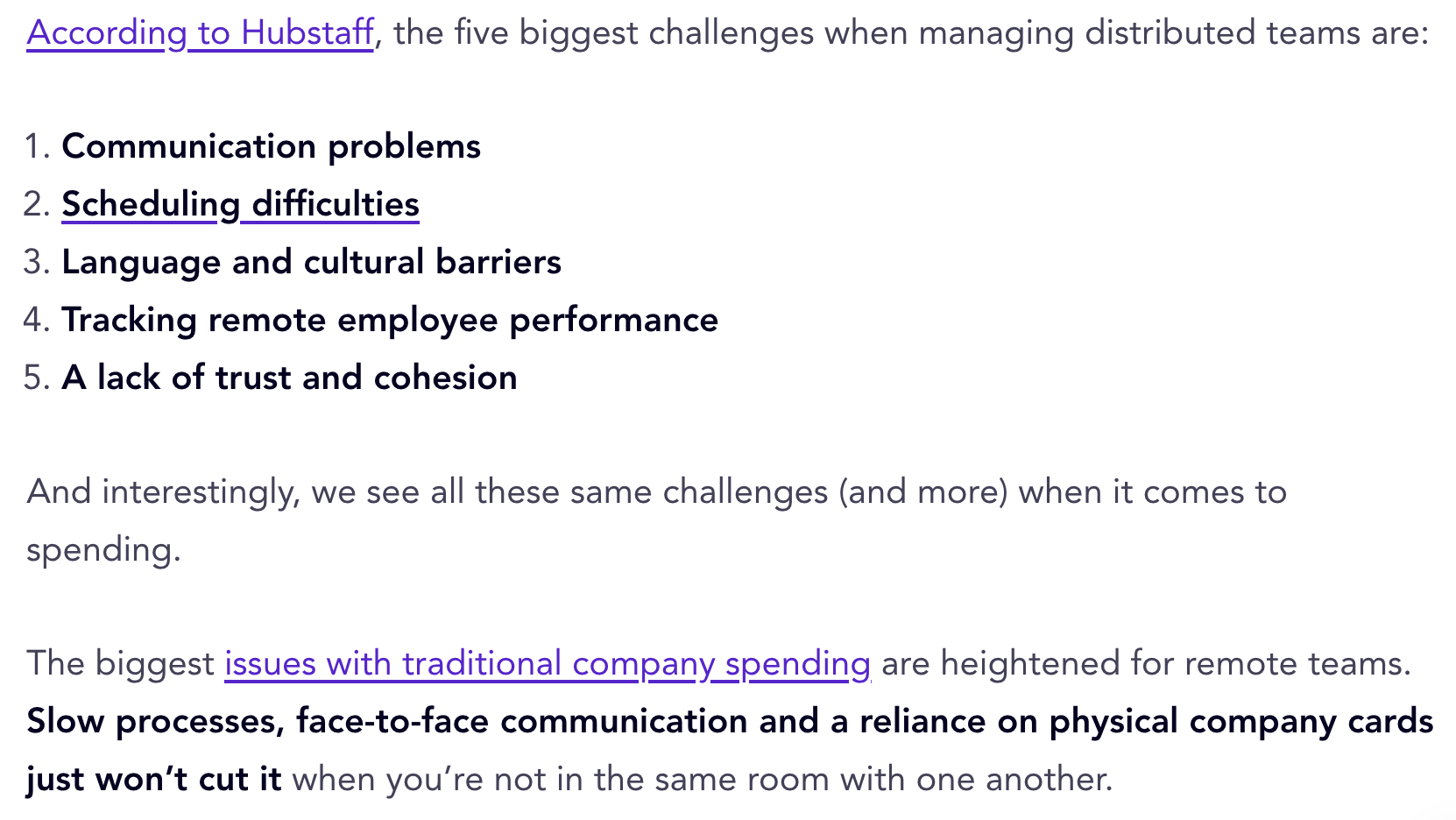
Instead of going in-depth about the challenges, they reference a third party (Hubstaff). This is the perfect example of a case where a writer doesn’t actually know what the challenges are. They’re literally having to refer to a separate study to explain them! Shouldn’t they know the challenges of managing distributed teams from talking to their customers?
And then when they dig a bit deeper, it’s still incredibly surface level. Also, notice that they don’t mention the actual problem:
“Slow processes, face-to-face communication and a reliance on physical company cards just won’t cut it when you’re not in the same room with one another.”
They just “won’t cut it”. But what does that mean? Why won’t they “cut it”? You said you were going to talk about the challenges that remote teams face, but you don’t mention a single real challenge.
Let’s compare this with an article we wrote for Jeeves on the same topic. With this article, we start out by listing the challenges. We were able to do this because our article is based on an interview with a salesperson – someone who talks to customers every day and sees these challenges first hand. The first pain point we go into is:

Why is it dispersive? We explain further on:
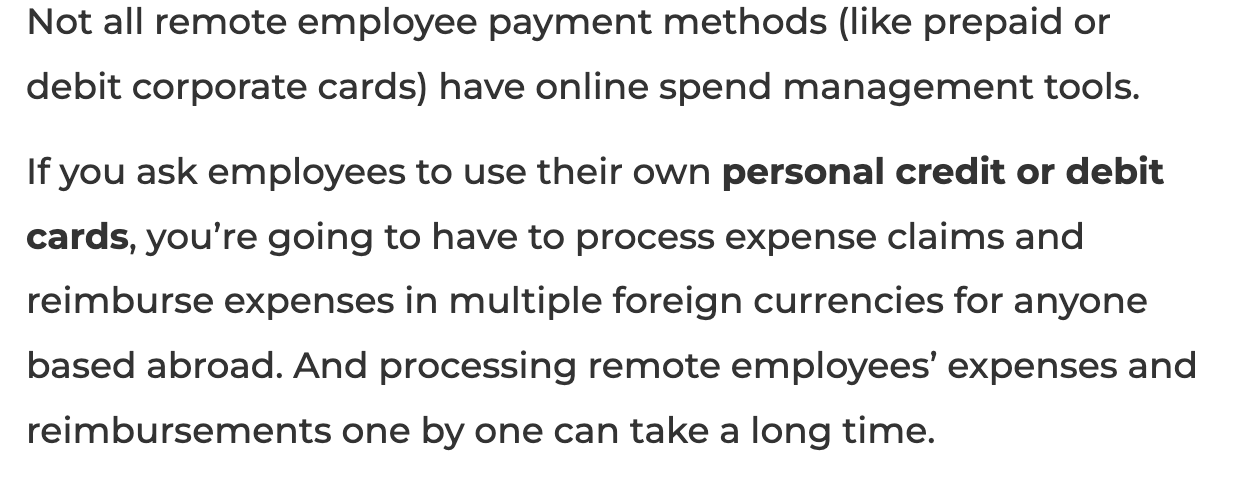
Because we have an understanding of the customer pain points, we’re able to go deeper: we know tracking your spending is difficult because a lot of the everyday tools employees use (usually personal debit cards) do not have an online alternative.
We also know tracking is difficult because employees not only have to deal with expense claims, but they might be in different currencies. Why is that a problem? Because processing expense claims takes up valuable company time, and using different currencies means that exchange rate fluctuates, which could lead to more costs.
If you really want the reader to take you seriously, you need to be able to go deep in their pain points. If not, it’s just a generic article written by ChatGPT.
This is the other challenge we mention in the article:

Again, this is not a challenge that Spendesk mentions. But in fact, we know that the biggest problem that remote teams cause is lack of visibility.

But we don’t stop there – we explain why that is a problem in itself. And that is: it leads to overspending. The fact that you cannot monitor in real-time is that it leads to overspending, which can lead to an increase in costs.
Not once does Spendesk mention this in their article. So, as a reader, which company do you feel understands your problem better? Spendesk or Jeeves?
If you’re going to write about the product, make sure you understand the pain points and are able to connect the features to the right pain points.
c. Use examples
In the B2B world you sometimes have to use jargon. As we’ve said many times, you should write for your ideal customer (who are often experts), not just anyone interested in the topic (i.e. beginners).
Since we write a lot about B2B fintech, we have to use words like “payment orchestration” and “ecosystem”.
But that isn’t an excuse to be lazy and not thoroughly explain what you mean. What we’ve found works best is that if you do feel that a topic is too vague or is difficult to explain: use an example. See how throughout this article that you’re reading right now, we’ve been including real examples? That makes it a lot easier to understand what we’re saying.
But what often happens in fintech and payments is that people just say “customer experience” and then leave it at that. Like this:

Which new tactics? Which vulnerabilities? Since they don’t use examples and aren’t specific, we know the writer just put some vague words to sound clever. But it just makes it boring to read and you’re not learning anything new.
One of our clients, Tenity, helps corporates with corporate innovation by connecting with startups. It’s a complex world where it’s very easy to fall into the trap of using vague words to explain what we’re doing.
It’s not always perfect, but wherever we can we try to use examples to explain what we mean. One of the key feature/benefits of working with Tenity is that corporates can:

But what does a startup accelerator look like in practice? How does this help the corporate? We added an example straight afterwards to help make it clearer:
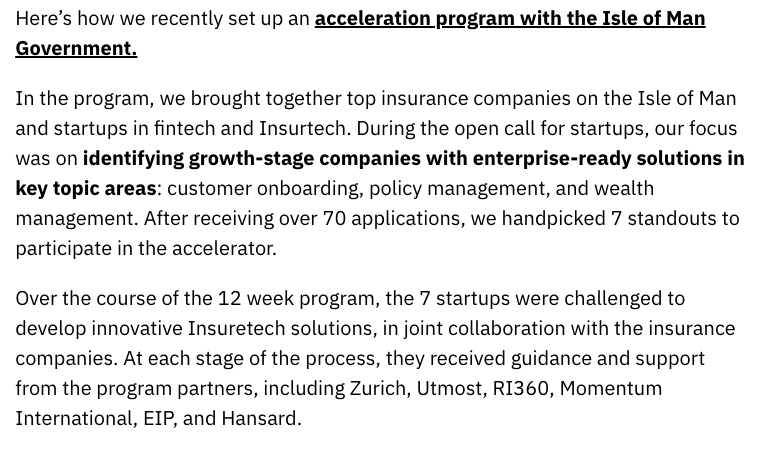
Now it’s a lot clearer.
Not only does an example help explain the concept, but it adds more credibility to Tenity because it shows that they’ve done this before and with a well-known client. If you can do the same, then why not include it in your content?
d. Ask yourself: “Ok, but how”?
When you’re editing your content, you should always ask yourself “Ok, but how?”.
“Our credit card help companies save money”.
Ok, but how? Anyone can say they save money or make your process more efficient. The real question is: how?
Again, it’s lazy writing. In order to explain the how, you need to be able to understand the product. And since most writers aren’t given the right material or involved in the content strategy, they often can’t do that.
In this article by Spendesk, almost every sentence doesn’t answer “Ok, but how?”

How are virtual cards easier for employees to use? In what way?

Why does having a “pre-approved” virtual card make hassle-free purchases?
The writer does not elaborate enough to make the benefits clear. When that happens, then the features fall flat, because they don’t go into the real benefit: which is that the manager can pre-approve how much the employee spends, and therefore ensure there is no overspending.
But the writer can’t do that, because they probably don’t understand the key pain points (likely to no fault of their own).
Always ask yourself “Ok, but how?” to make sure the benefits are clear.
3. Include the right features and value propositions
We talk a lot about writing about features and benefits in our articles. But it’s important to reiterate that you shouldn’t include all the features of your product, you need to include the right ones for the person who’s reading.
One of the things we look at when evaluating writers is: did they just include the main features? Or did they include the ones that would matter to the searcher?
Let’s take one of our clients, Parpera, as an example.
As part of our content strategy, we wrote an article targeting someone looking up “sole trader accounting software”. Let’s compare our article to one of the ones on the first page of Google. All of the articles compare the different solutions available.
Just for your information, the main issues freelancers face with most accounting software are:
- Most accounting software is built for accountants, not sole traders. So it's often overly complex and has more features than you need.
- Many accounting solutions will require 2+ hours of learning how the tool works and setting it up correctly.
- Accounting software isn't designed for what sole traders really need: an easy tool to help you manage your finances, send invoices and get paid quickly.
- Many tools are too expensive for freelancers, and have more features than you're ever going to use.
Now, if you type in “sole trader accounting software” in Australia and look at the top three results, you’ll see that most of them compare different accounting software solutions. They then list the features of each solution:



As you can see, they all seem to focus on listing the different types of plans available and explaining that the solutions will grow with you. In our experience, that is rarely a priority for freelancers. Few freelancers grow into an agency, and since they’re a one person business, they’re never going to be issuing 100+ invoices per month (i.e. there’s a ceiling to how much they’ll grow).
None of the articles focus on the value props that we would say are most important:
- Freelancers want something that is quick to set up and learn.
- Freelancers wants something that’s affordable.
- Freelancers want something that will make it as easy as possible to do their taxes.
That’s why in our article, we focused on the key value props:



See how easier it is to write an article when you understand the pain points and know exactly what value props to mention?
As a result, your articles speak a lot more to the reader, which in turn helps with conversions and trust in the brand.
4. Use diagrams
A lot of content marketers will add stock diagrams and images to a text to break it up. Although it’s a good idea in theory, in practice it leads to articles full of images that are completely unrelated and remove value from the content.
What we like to say is: only add an image if it adds to the content. Does it explain a concept very well? Does it illustrate what we’re trying to say? Then add it in.
Especially in the abstract world of payments, using diagrams helps a lot with understanding how your product works.
To take full advantage of diagrams when explaining a concept, do it with a diagram of your own product. If you’re using your product to explain, then it’s a lot more likely they’ll associate your product with that concept. Here are some diagrams we’ve used for our payment clients:


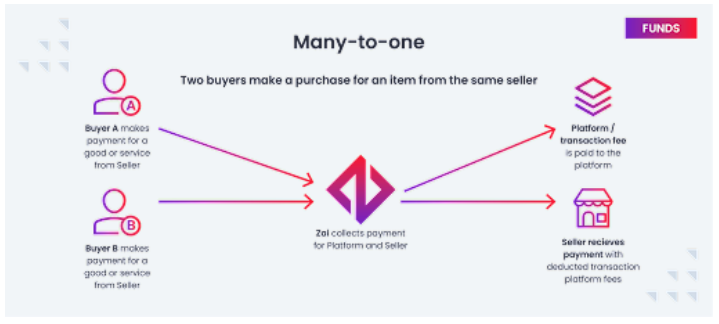
5. Use case studies
In most of the BOFU articles we write we’ll also include a case study or real life example of how this works in practice. That’s because few people read case studies alone.
The real value of case studies is apparent when you include them in your everyday content that brings in customers. You can use examples as we mentioned earlier, but these don’t always have to be with your own customers.
That’s why it’s also worth including case studies. Similar to examples, they can be a short sentence or paragraph, like in this article for our client Tenity:
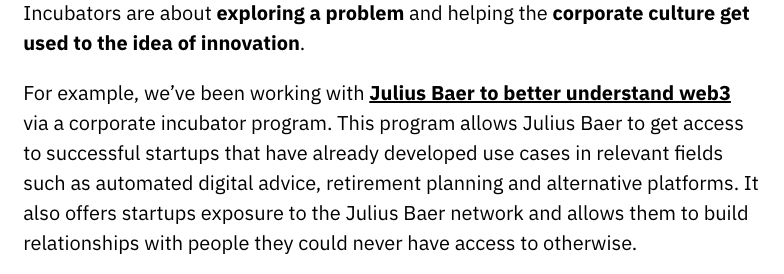
But usually we like to add an entire section devoted to the case study. In a comparison of BOFU articles, we'll add an example of what this looks like in practice.

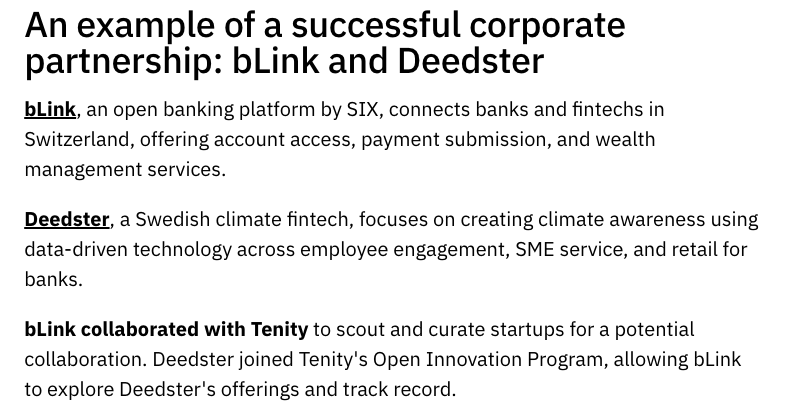
Adding a mini case study helps explain complex topics and make them real. Plus, by using a real customer you can build more credibility for your brand.
6. Remember to always go back to the searcher’s intent
Again, you don’t need to be salesy to write about your product.
The best way to avoid this is to always put yourself in the shoes of the person searching and understand their pain points: what kind of information do they want? What are they trying to understand? At what moment of the article does it make sense to introduce the product?
For example, writing about the product right at the introduction is sometimes too much (although we like to add a small CTA right after the intro). Instead, it’s often better to write about it in the body of the article. See how we do that here:

As you can see, we don’t mention Jeeves at all in the intro, and we won’t mention it until the first section. That’s because we think it’s unnecessary and might put off the reader.
In some instances, we won’t go in depth about the product until the last section:

Some companies will only add a 50 word paragraph at the bottom of the article briefly mentioning the product. We honestly believe that’s not enough, because it does not effectively showcase the features and benefits of your product in a way that makes it clear how you’ll help your reader.
Usually, for the reader to really understand what your product does, you need to go in-depth and focus on the value props you think the reader would care about. You can see how we do that in this article for Zai: Recurring billing integration: When and how to set it up?

This is easy to do when you understand your customer inside out, since you’ll probably have an intuition of how much of the product they want to read about and what key features matter to them.
Whenever we’re writing or editing an article, we’re constantly asking “What is the reader looking for? What do they want?”. Having that top of mind when you’re writing ensures you won’t ever get too salesy.
Ultimately, a lot of product copywriting comes down to choosing to not be lazy. It’s about choosing to spend the upfront time interviewing salespeople and understanding the customer. It’s about interviewing experts to make sure your article has a unique perspective and actually helps the reader. It’s about being willing to commit the time to going back and forth with the product marketer to make sure you get the messaging right.
There is no shortcut to excellent product copywriting: your writer needs to understand the product, needs to think in advance which features/benefits to include and needs to be aware of the case studies to add.
All of this effort comes across in your content. When a reader can tell that you clearly understand their pain points, you’re taking the time to explain features and benefits, including the right diagrams and being as specific as possible, who do you think they’ll have more time for? Who do you think will be more likely to reach out to you to learn more?
We hope this guide was useful for you, you can learn more about what we do below:











